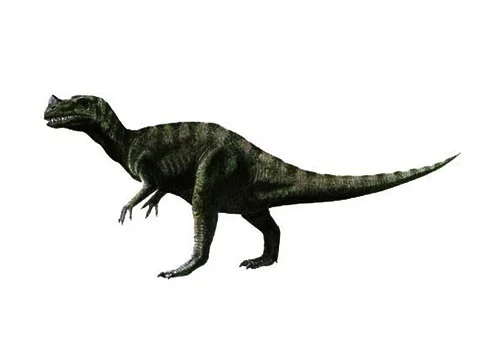Proceratosaurus (Before Ceratosaurus)

Pro-se-rat-o-sore-us
Friedrich von Huene - 1926
Carnivore
Estimated 2 meters long
Small Theropod
P. bradleyi (type)A. giganticus (type)
England, Gloucestershire, Minchinhampton
Late Jurassic, 167-164 million years ago
Proceratosaurus Facts
Proceratosaurus, meaning “before Ceratosaurus,” is a genus of small carnivorous dinosaur that lived during the Late Jurassic period, approximately 167 to 164 million years ago. It was a member of the group known as theropods, which were characterized by their sharp, serrated teeth and bipedal stance.
Proceratosaurus was first discovered in 1910 in England by F. Lewis Bradley. Since then, additional fossils have been found in various locations around the world, including China and the United States.
As its name suggests, Proceratosaurus is believed to be an early relative of the later Ceratosaurus. It shares some physical characteristics with Ceratosaurus, such as a bony horn on the snout and sharp teeth, but also has a number of differences, including a smaller size and more primitive skeletal features.
Proceratosaurus was a small dinosaur, measuring approximately 2 meters (6.5 feet) in length and weighing up to 40 kilograms (88 pounds). It had a slender build, with long, powerful hind legs that allowed it to run at high speeds. Its arms were relatively small and ended in three-fingered hands with sharp claws.
As a carnivore, Proceratosaurus likely hunted small prey, such as lizards, mammals, and other small dinosaurs. Its teeth were sharp and serrated, and it had a powerful jaw that could deliver a strong bite. The bony horn on its snout may have been used in display or as a weapon in fights with other Proceratosaurus individuals.
In conclusion, Proceratosaurus is a fascinating dinosaur that provides valuable insight into the evolutionary history of theropod dinosaurs. As a paleontologist, studying fossils of Proceratosaurus and other dinosaurs helps us to better understand the diversity of life that existed on Earth millions of years ago, and how these animals evolved and adapted over time.



